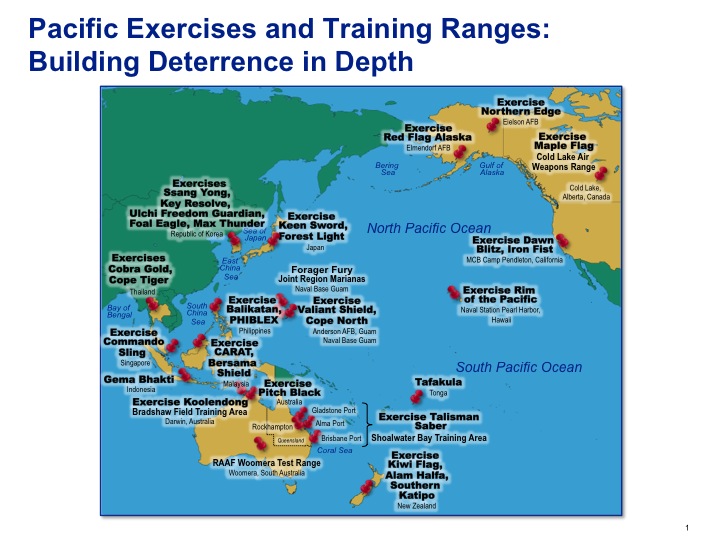02/26/2015: By Robbin Laird
I had not visited the Final Assembly Line or FAL in Fort Worth since late 2012.
Much has changed as the line has matured, and a line stood up in Cameri, Italy and one being built in Japan.
The first Italian FACO F-35 rollout will happen soon in Italy.
A key aspect of the program is the joint buys of the US services and the partners in common contracts with Foreign Military Sales customers like Israel, Japan and South Korea purchasing via the FMS route.
The F-35’s nine partner countries are Australia, Canada, Denmark, Italy, the Netherlands, Norway, Turkey, the United Kingdom and the United States.
Nearly 50% of F-35s to be delivered in the next five years are for international customers.
Currently, F-35s are flying on nine operating bases with 120 airplanes flying and the fleet as surpassed 25,000 flight hours.
There are nearly 100 jets under construction at the Fort Worth plant, and one can see already on the line jets being built which will surpass the numbers of F-22s which were built.
A single line is building three different variants of the aircraft – the F-35A, the F-35B and the F-35C – and can accommodate configuration differences for the allies, such as the chute for the Norwegian F-35A, which is being built to deal with icy runways.
When I visited the factory the last time, I talked with the manufacturing line guru of Lockheed Martin, Dr. Donald Kinard.
At that time, he highlighted the challenge of building three different airframe variants on a single manufacturing line,
Because the Navy is coming in last among the three they are starting at a point in the learning curve significantly different than if they were building an aircraft just for themselves.
Because we’re building the other variants together with the CTOL, we’re getting a combined learning curve for those aircraft that you wouldn’t see if you were just building them by themselves.
If you were off in some other place, another factory, you wouldn’t have the commonality, and you wouldn’t have a learning curve.
I would say that CVs are being dragged down a path by the other aircraft, down a very excellent learning curve.
And frankly, the challenge of building three variants on a single line was one, which has been significant.
As a manufacturer, I was not certain that the three variants would be able to come down a common learning curve because structurally, the parts are different.
We will publish an updated perspective on the manufacturing line in an interview with Don Kinard, whose official title is Lockheed Martin, Senior Fellow.
But looking at one of the Norwegian aircraft on the line, Kinard made this point about modifications which are being made when desired and paid for by partners.
The Norwegians want a drag shoot mod on their aircraft due to the need to land on icy runways.
We had a drag shoot on a test aircraft, but not on a production aircraft.
Every country has some unique requirements, and weapons they might want to operate from their aircraft.
There is then potential for even greater variety on the line than the differences among A, B and C models, which already from an air structure point of view is different.
Visiting the FAL in Fort Worth highlights the process of moving planes from one end of the assembly line to the other over a year and a half.
The planes move on average every five days, and the process of building aircraft is clearly accelerating.
The result will be seen in the numbers of deployed aircraft in the period ahead, more than 600 by 2020.
In the second photo, the numbers of aircraft – more than 400 – deployed in various global locations by 2018 is portrayed.
During my visit, I saw several partner airplanes on the line including British, Norwegian and Italians, and there may have been more but that is what I saw while visiting the FAL.
And the numbers are clearly ramping up for all three models, and note BF-51 which is the 51st STOVL jet, as I was touring the line.
The remaining photos provide various views of the line and aircraft in various phases of production.
The photos towards the end of the slide show highlight planes at the end of the production line or in the paint shop.
Having a long production one and a high technology production process has allowed the FAL to incorporate changes, which enhance reliability and lower cost.
There are many examples of this, which have built into the line since I was last there in late 2012.
We will focus on several examples of this process in later stories.
The photos were shot by Angel DelCueto, Lockheed Martin photographer, on February 20, 2015 and were subsequently cleared by the Joint Program Office.
And the second photo — the briefing slide — was provided by Lockheed Martin but has been approved by the Joint Program Office as well.



